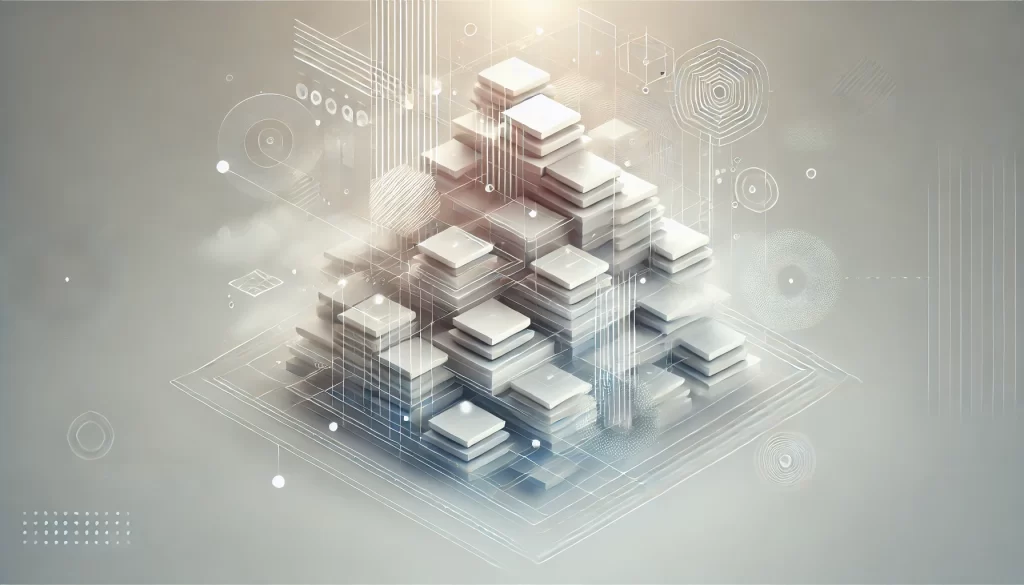Picture this: a skyscraper standing tall in the heart of New York City. It’s the pinnacle of engineering, a marvel of human achievement—yet the larger it grows, the more resources it consumes. Energy bills skyrocket, maintenance becomes a logistical nightmare, and after a while, you realize the height doesn’t necessarily improve its function. Sure, it’s impressive, but is it practical?
This, my friend, is the metaphor that best describes the current state of AI models today.
For years, we’ve been under the illusion that “bigger is better” when it comes to artificial intelligence. It’s been a race to build larger, more complex models like GPT-4 and Claude 3.5, with tech companies stacking them higher and higher like the skyscrapers of Silicon Valley. But recent groundbreaking research from Google DeepMind has revealed something truly paradigm-shifting: what if we could get smarter AI without making them bigger?
Hold onto your hats, because this changes everything.
The Great Myth of “Bigger is Better”
Let’s start with where we’ve been. Over the past decade, large language models (LLMs) like GPT-4 and Claude 3.5 have fundamentally reshaped the technological landscape. They’ve become our digital personal assistants, our tutors, our fact-checkers, and even our companions in philosophical debates (though GPT-4 could work on its sense of humor a bit).
It’s easy to understand why the industry has pursued these massive models: larger models are like encyclopedias with more pages. The more pages, the more information. GPT-2 with its mere 1.5 billion parameters feels like a pocket guide compared to GPT-3's massive 175 billion, and GPT-4 is the equivalent of carrying a library around in your pocket.
But here’s the catch: this scale comes with monumental costs. I’m not just talking about financial costs (though training these models is expensive enough to buy a small island). I’m talking about energy costs and environmental impact—running these enormous models feels like trying to power a space station just to brew your morning coffee. It’s overkill.
Imagine owning a Ferrari but only ever using it to drive to the corner store. Sure, you get there fast, but was all that horsepower really necessary?
The Big Elephant in the Server Room
Let’s not forget the environmental cost. These behemoth models require vast amounts of electricity to run. In a world where sustainability is quickly becoming not just a preference but a necessity, continuing down this path isn’t just impractical—it’s irresponsible. Training GPT-3 alone consumed enough energy to power 126 homes for a year. Now multiply that by the number of companies racing to build even larger models. The carbon footprint is enough to make you wonder if we’re solving problems or just creating new ones.
It’s here where the law of diminishing returns comes into play. Like stacking another floor on that skyscraper, each additional parameter in these models provides smaller and smaller improvements. It’s like filling a swimming pool with a teaspoon—the more you add, the less you notice.

Enter the Era of “Smarter is Better”
DeepMind’s latest research introduces something game-changing: test-time compute optimization.
Now, let’s break this down in human terms. Think about the difference between a sprinter and a marathon runner. The sprinter gives everything in a burst of energy to get the best time over a short distance. The marathon runner, on the other hand, paces themselves, reserving energy for key moments—like when they need to kick up the speed during the final stretch.
For years, AI models have been more like sprinters. We throw massive amounts of computational power at them from the start, expecting them to perform perfectly in all situations. But DeepMind is suggesting a shift in strategy—let’s make AI more like marathon runners. Instead of throwing all the power at them upfront, let’s reserve energy for when it matters. This approach is called test-time compute.
A Thought Experiment: Test-Time Compute
Here’s a simple analogy. Imagine you’re taking a high school math exam. Now, for most of the questions, you might breeze through them using just basic logic and arithmetic. But then you get to that one question that throws you off, requiring some serious brainpower. Would you use the same mental energy on the easy questions as you would on the hard ones? Of course not! You save your mental reserves for when you really need them.
That’s exactly what test-time compute does. Instead of applying the same computational power to every problem, regardless of complexity, the AI reserves its computational resources for the trickiest tasks. The easy stuff? It breezes through that without breaking a sweat. But when faced with a complex challenge, the model goes all-in, using extra computing power to ensure it gets the right answer.
Now, this may not sound revolutionary at first glance. But think about the implications: smaller, more efficient models that deliver better performance without the monstrous computational cost. We’re talking about AI models that could run on your smartphone without needing the equivalent of a small power plant to keep them running.

The Bigger Picture: Why Efficiency Matters in AI
Now, let’s zoom out and understand why this shift from “bigger is better” to “smarter is better” isn’t just a technical evolution—it’s a social, economic, and environmental necessity.
1. The Environmental Crisis
Let’s face it, we’ve got a serious climate problem on our hands. And while AI has the potential to revolutionize industries—from healthcare to education—it’s also contributing to the problem. By reducing the computational cost, test-time compute optimization helps address the environmental issue directly. Think of it as choosing a hybrid car over a gas-guzzler—it’s still getting you where you need to go, but without leaving a massive carbon footprint.
2. Democratizing AI
Here’s where the emotional appeal comes in: if we can create smaller, smarter models, we democratize AI. No longer will cutting-edge AI be confined to the tech giants with massive data centers and unlimited budgets. Imagine a world where a small business in rural America or a startup in Nairobi can deploy AI models that are just as capable as the behemoths running in Google’s cloud. That’s a game-changer.
In the same way that smartphones brought computing power to our pockets, smaller, smarter AI will bring advanced technology into the hands of more people, leveling the playing field and empowering innovation from the ground up.
Scaling Models vs. Optimizing Test-Time Compute: The Trade-offs
Let’s pause for a moment and consider the trade-offs between the traditional approach of scaling model parameters and the new strategy of optimizing test-time compute.
⚖️ Scaling Model Parameters vs. Optimizing Test-Time Compute ⚖️
| Approach | Pros | Cons |
|---|---|---|
| Scaling Model Parameters | - Larger models handle complex tasks better - Improved accuracy with bigger datasets |
- Extremely high costs - Increased energy consumption - Diminishing returns |
| Optimizing Test-Time Compute | - More efficient models - Can handle diverse tasks - Lower energy consumption |
- Complexity in designing the models - Initial setup can be challenging |
A Real-World Example: How Test-Time Compute Solves Problems
Let me paint you a picture of how this could play out in the real world. Imagine you’re working for a healthcare provider, deploying AI to assist in patient diagnosis. The traditional AI approach would be to load up a massive model capable of handling any case—from the common cold to rare genetic disorders. But, here’s the problem: running such a model would be resource-intensive and costly.
Enter test-time compute. Instead of using the full model for every patient, the AI could reserve its computational resources for the complex cases that need extra attention. For the more straightforward diagnoses, it uses less power, giving you the same accurate results but at a fraction of the cost. The implications for cost savings and accessibility, especially in rural or low-resource settings, are enormous.
The Future of AI Is Hopeful, Not Just Powerful
What we’re really talking about here is hope. The future of AI isn’t just about creating smarter machines—it’s about creating a better world.
Think about the joy that comes from knowing AI could be integrated into every part of our lives without the cost of environmental damage. Consider the security it offers—knowing that smaller, more efficient AI could help power everything from our cars to our smart homes without draining our wallets or the planet’s resources.
And let’s not forget freedom. By optimizing how AI models function, we free ourselves from the constraints of massive computational needs. Smaller, smarter models could lead to more personalized AI assistants, quicker healthcare diagnoses, and even AI-driven solutions to climate change. It’s the promise of a better, more efficient world—powered not by brute force, but by intelligence and thoughtful design.
Test-Time Compute and the Future of Innovation
I’m going to throw in a thought experiment here: Imagine a world 10 years from now where AI is as ubiquitous as electricity. It’s embedded in everything, from our homes to our workplaces, and it’s more than just smart—it’s efficient. In this future, you won’t need a high-powered data center to access advanced AI; it will be as simple as flipping a switch.
Now imagine what this means for society. The impact goes far beyond tech companies. Smaller, more efficient AI could accelerate everything from education reform to disaster response. In this world, everyone from school teachers to first responders would have access to AI-powered tools that are not just advanced but also energy-efficient and scalable. This future is within reach, thanks to breakthroughs like test-time compute optimization.
Rethinking What AI Can Be
So, what’s the takeaway here? It’s time to challenge the assumption that bigger is always better. With DeepMind’s research into optimizing test-time compute, we’re opening the door to a future where AI is not just powerful but efficient, accessible, and sustainable.
What’s your vision for AI’s future? Will we continue to build bigger and bigger models, or will we embrace this smarter, more efficient approach?
Share your thoughts in the comments below! And hey, if you’re ready to be part of the next big thing, apply to become a citizen of the "Shining City on the Web" and join the conversation about where technology, society, and innovation are headed.




















Post Comment
You must be logged in to post a comment.